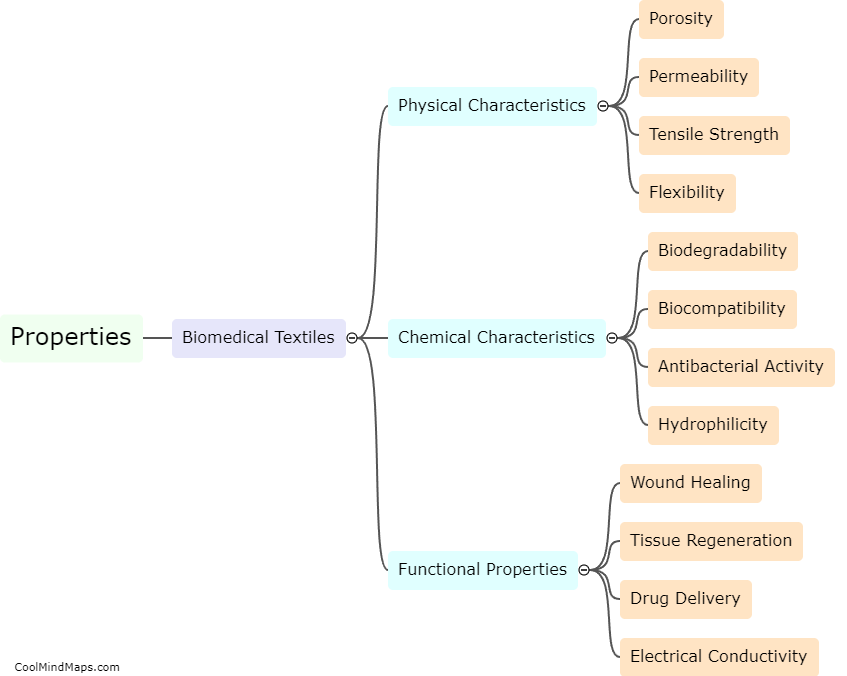How do mechanical features affect biomedical textiles?
Mechanical features play a crucial role in determining the functional performance of biomedical textiles. These mechanical features include properties such as tensile strength, elasticity, abrasion resistance, and flexibility. It is important for biomedical textiles to have the appropriate mechanical features to ensure they can withstand the stresses and strains of their functional application. For example, a surgical gown must be flexible, tear-resistant, and impermeable to fluids to prevent contamination during surgeries. Similarly, an implantable medical device must be strong, durable, and biocompatible to ensure its safe and effective use inside the body. Thus, the mechanical features of biomedical textiles are critical in determining their overall performance and suitability for use in various medical applications.

This mind map was published on 17 May 2023 and has been viewed 100 times.











